The four core elements of the redundant architecture encompass the braking system, steering, power supply and some of the sensors. This includes environment recognition and handling. The battery, steering motor, wheel speed sensors and algorithms used by the system for data calculation are likewise duplicated. Some aspects of the sensor system are also functionally redundant because their different physical concepts (incl. optical; ultrasound; radio waves) are mutually corroborative, thus ensuring safe operation at all times. This mainly encompasses radar, cameras and a LiDAR. However, ultrasound and moisture sensors as well as microphones also deliver valuable data. Overall, more than 30 sensors ensure that DRIVE PILOT is reliably able to master the task of driving.
,xPosition=0,yPosition=0.5)
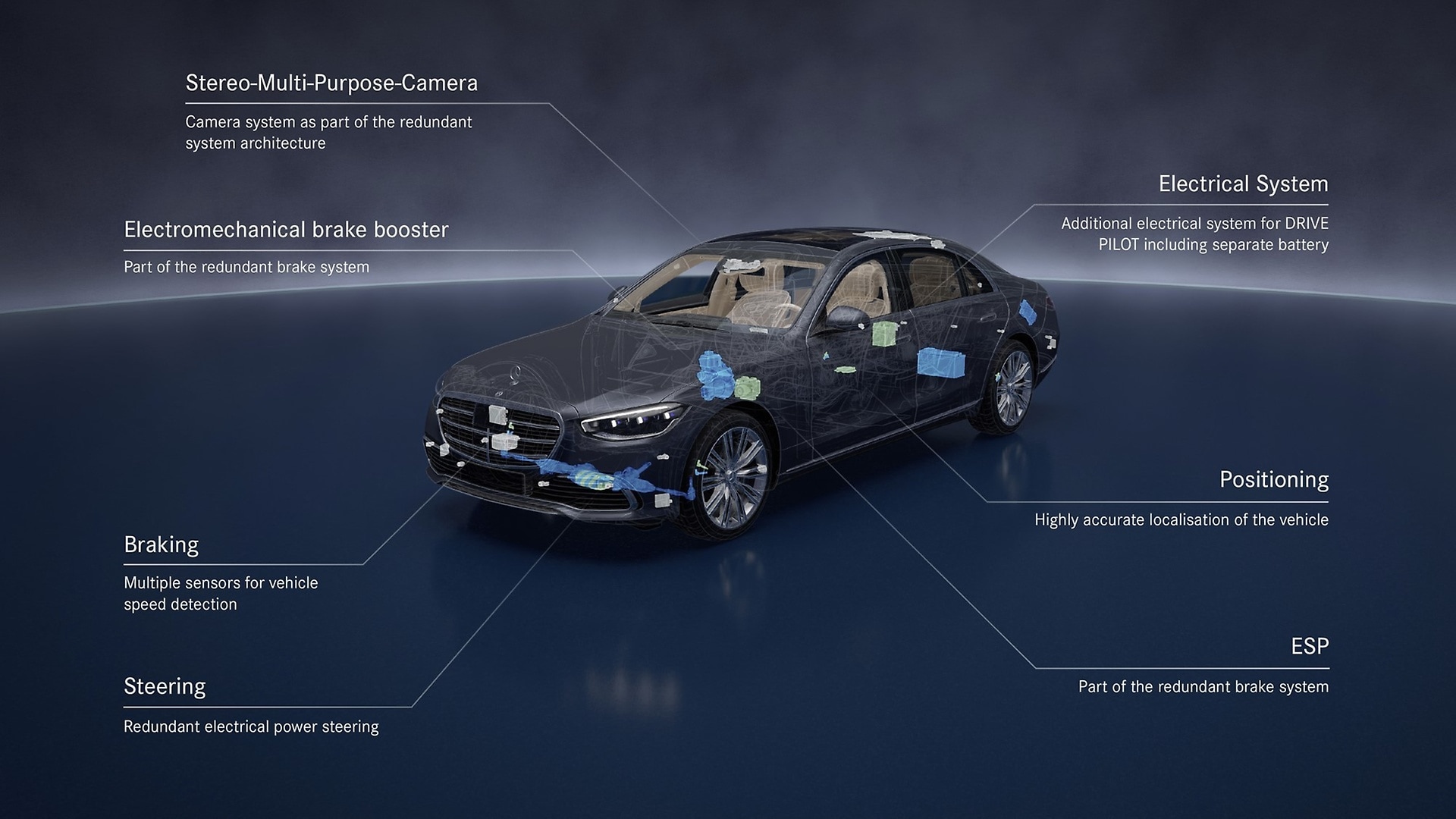

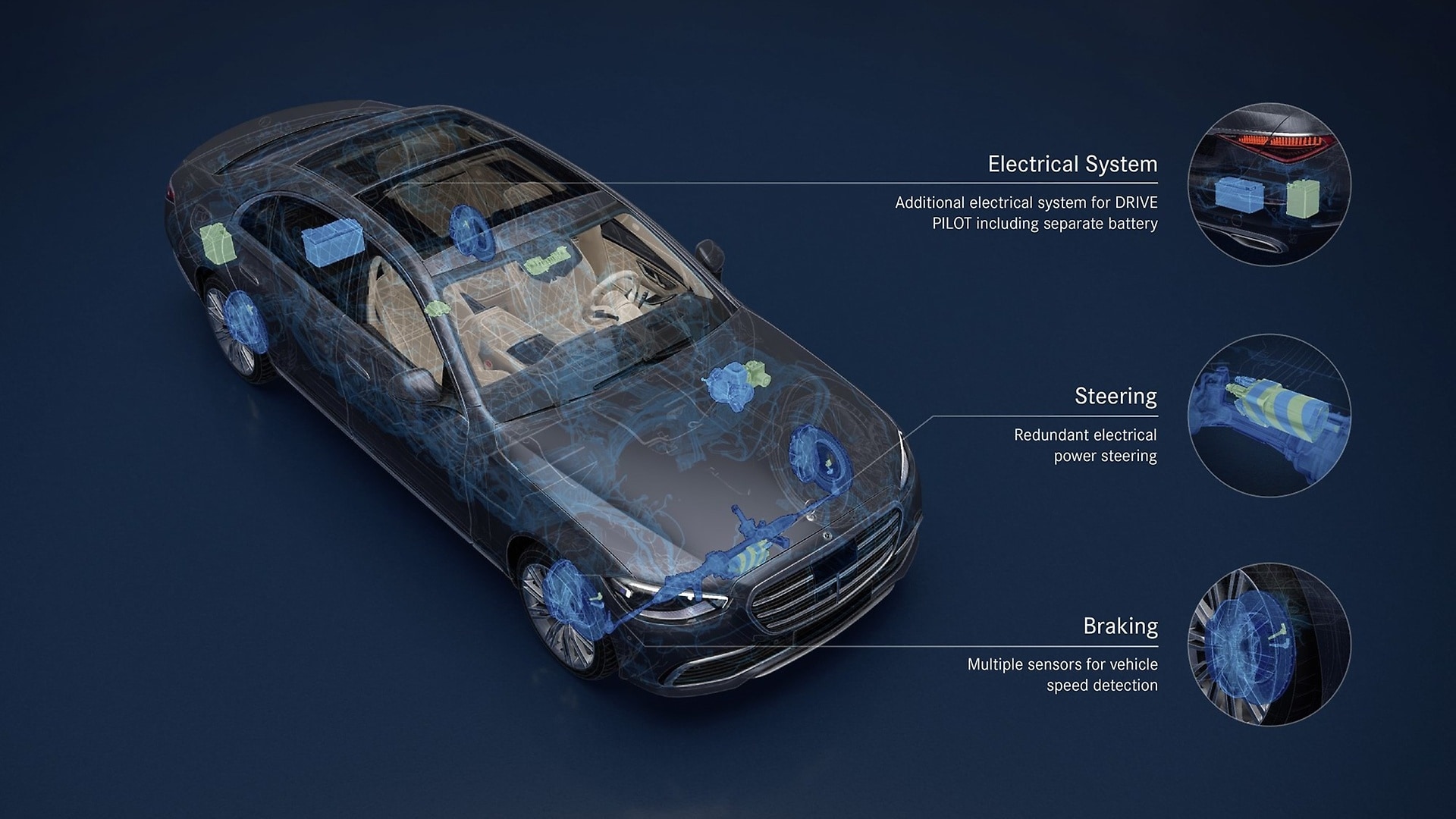
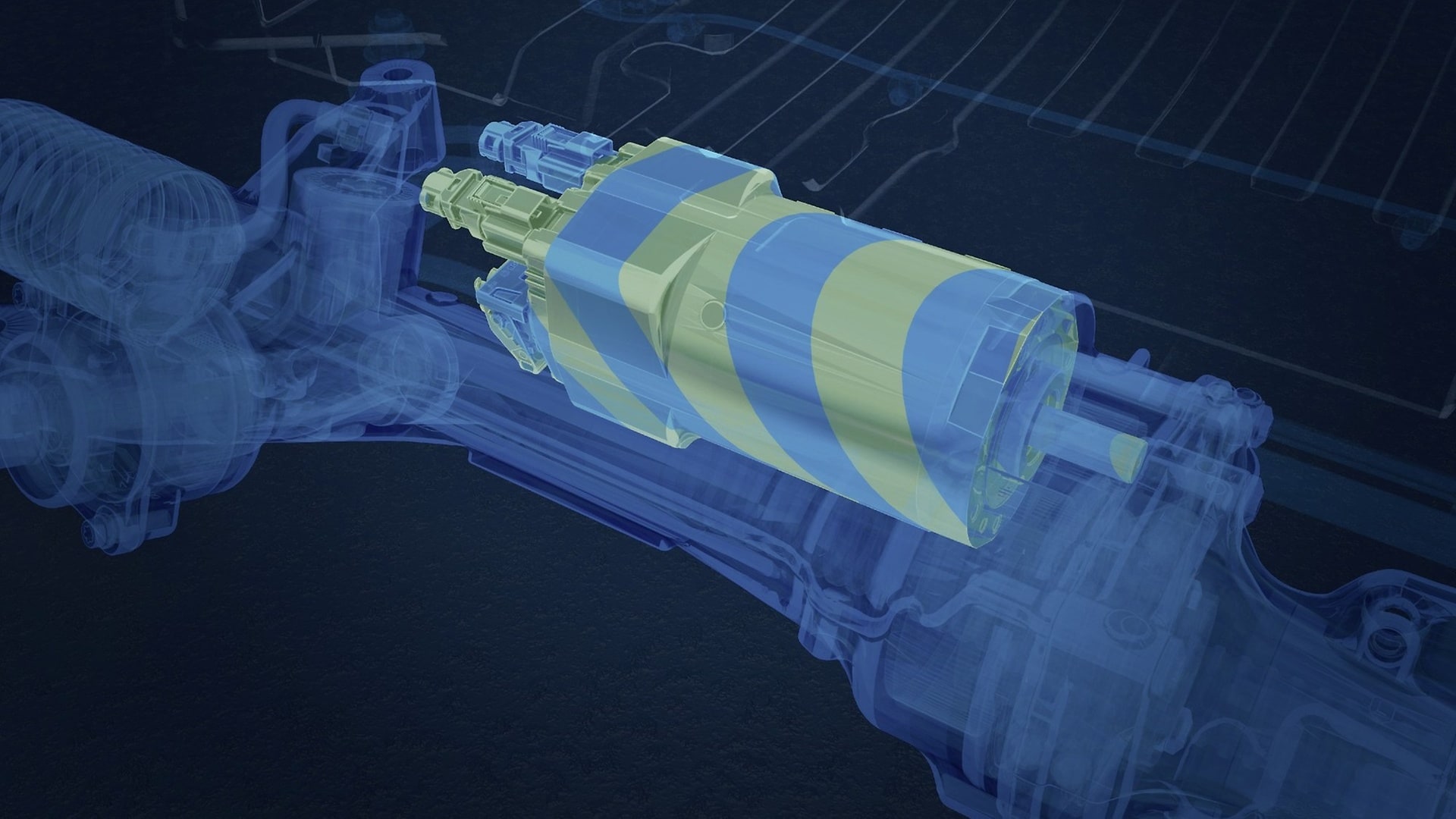
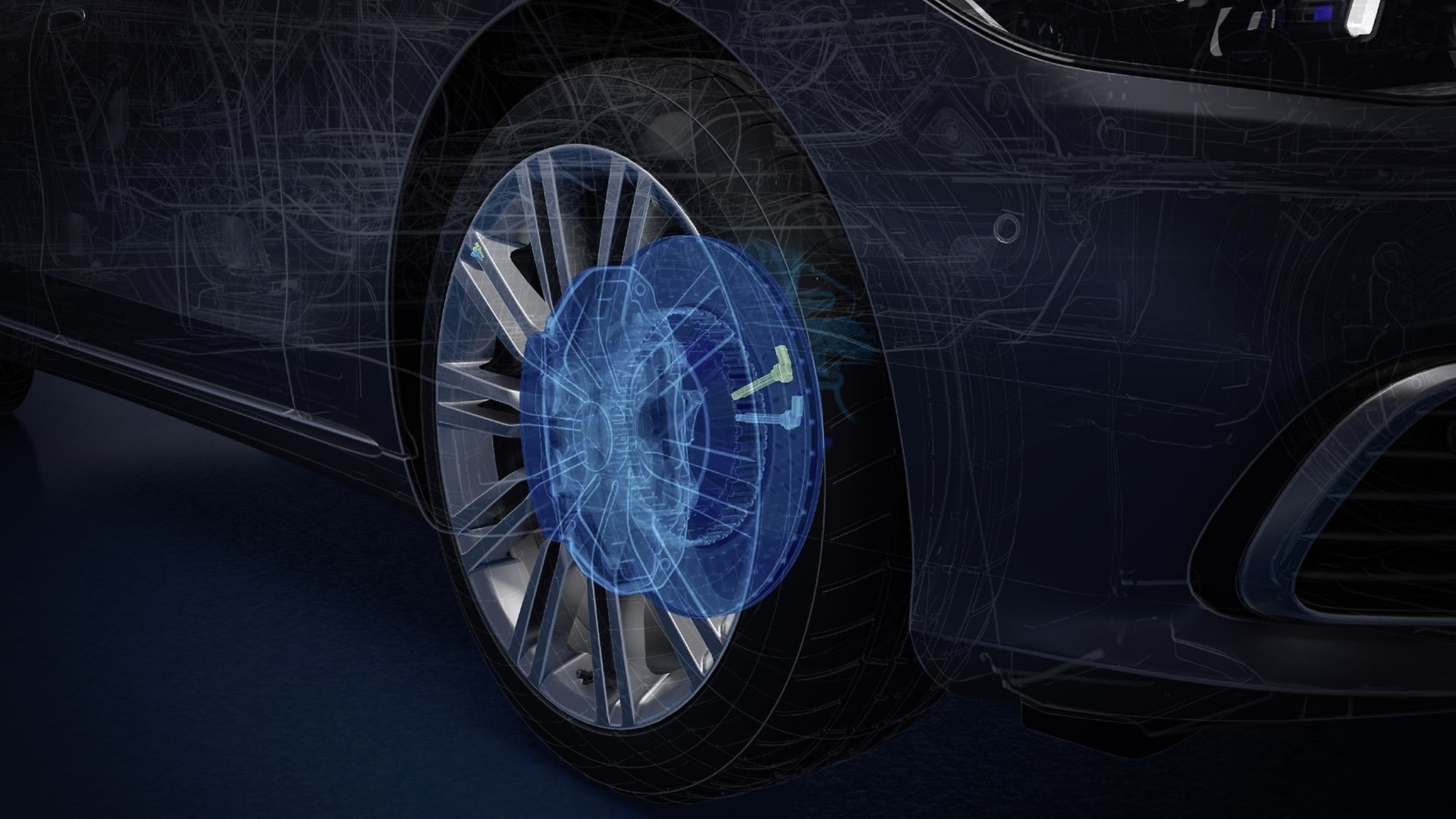
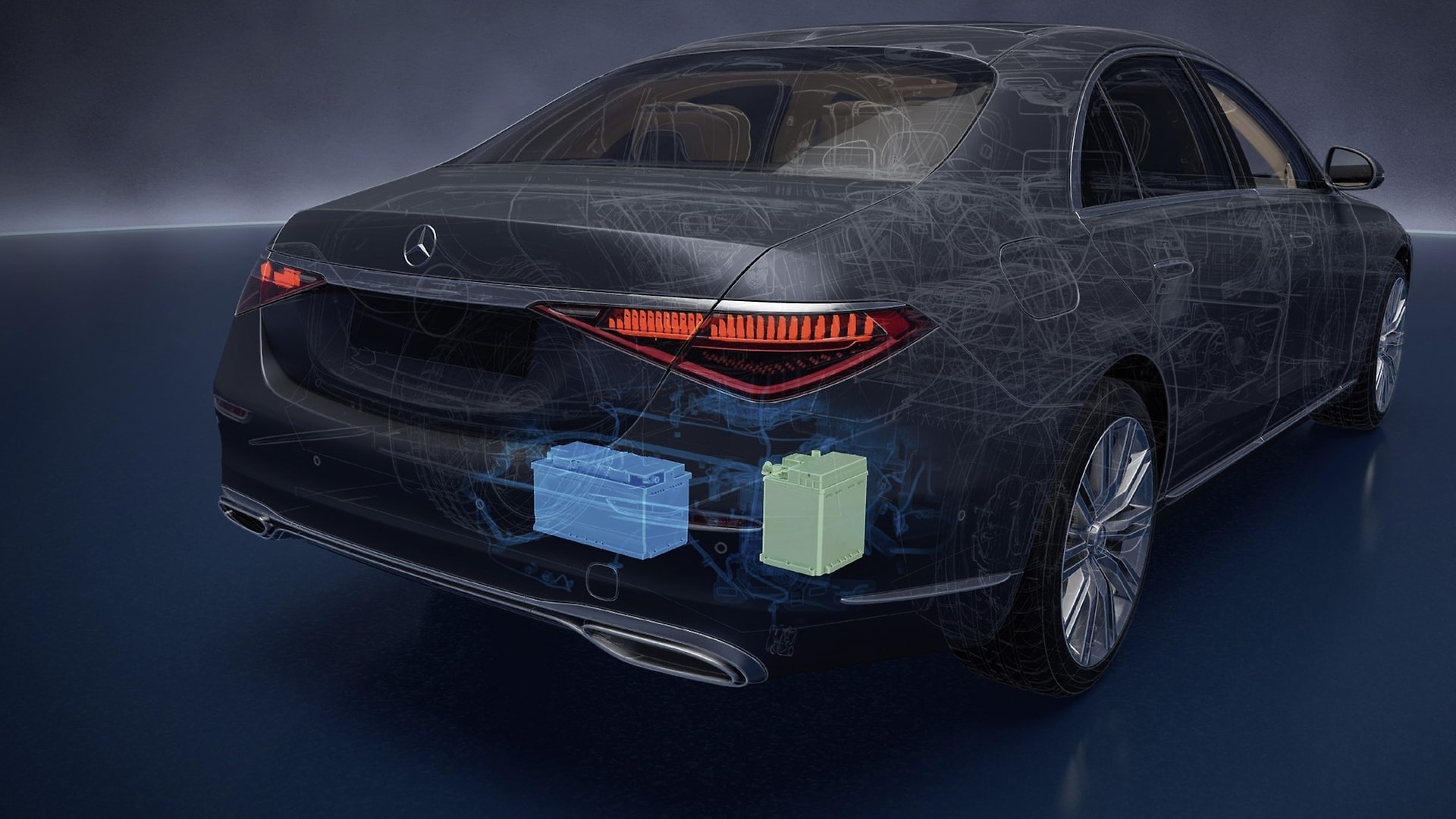
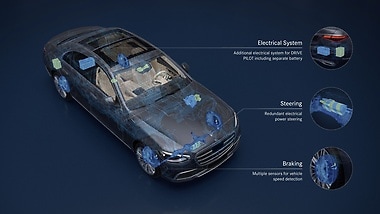
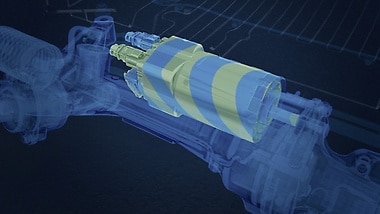
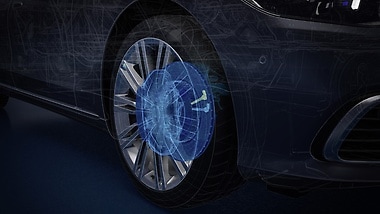
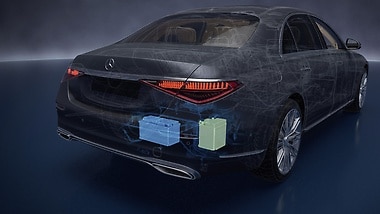
,xPosition=0.5,yPosition=0)
,xPosition=0.5,yPosition=0)
,xPosition=0.5,yPosition=0)